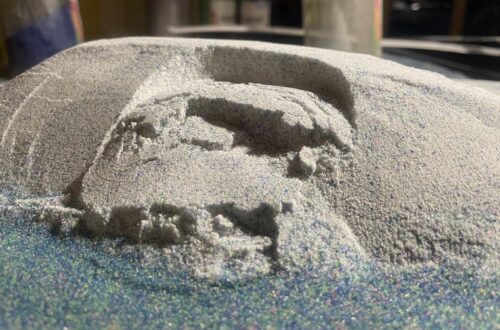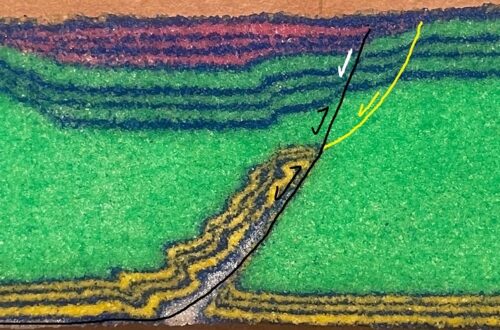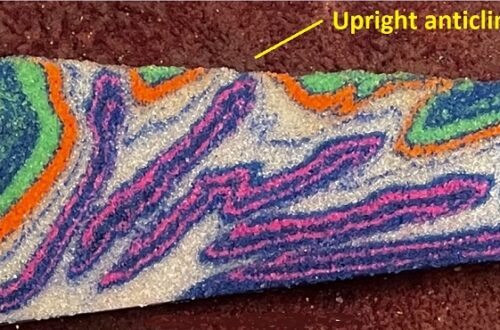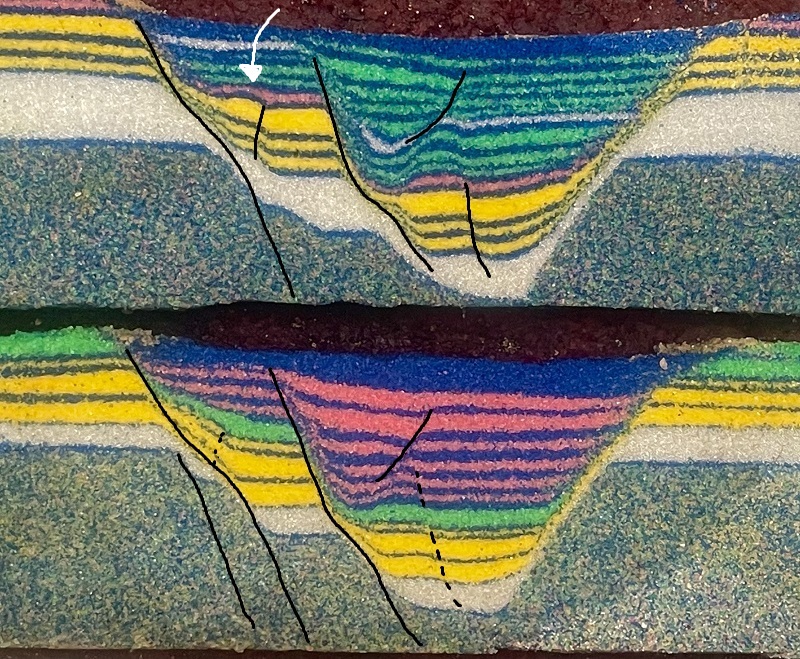
Sandbox model anticlines formed above normal faults during extension
by Philip S. Prince
Reproducing fold structures observed in sedimentary rocks has kept geologists busy since the 19th century. Early model faults and associated folds (H. Caddell and B. Willis, for example) were produced by compressional deformation of a variety of layered materials, and an intuitive association certainly exists between buckle folding and squeezing/shortening a sequence of layers. Extensional deformation, however, can also produce folding if the dips of normal faults change with depth. I recently made the extensional anticlines shown below (white arrows) while trying out some new sand combinations. I thought they were quite nice…
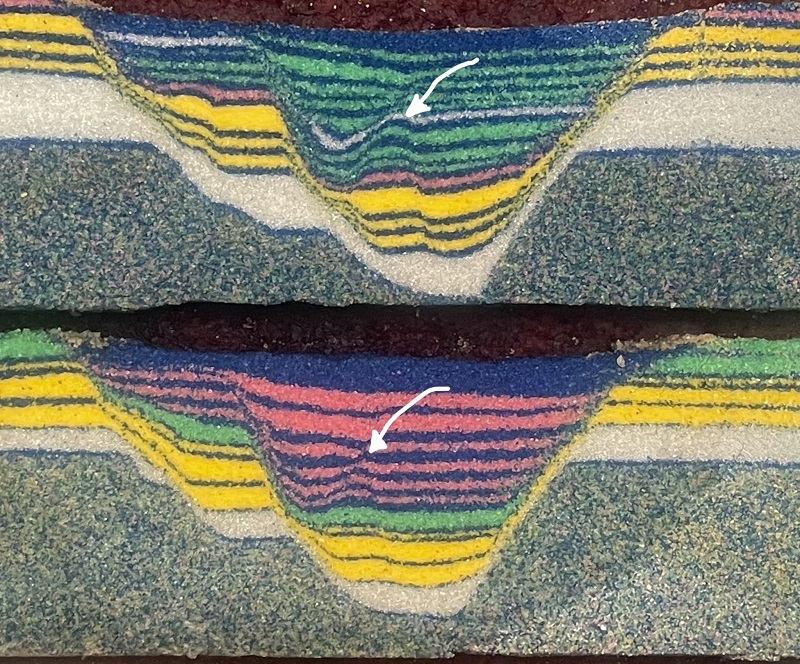
These folds are “forced folds,” meaning that they are effectively collapse structures that develop as a moving mass of material deforms to match the shape of an underlying fault surface. The GIF below demonstrates this idea. Moving downward through the section, a steep-shallow-steep fault will produce a syncline-anticline pair, just like what formed in the models.
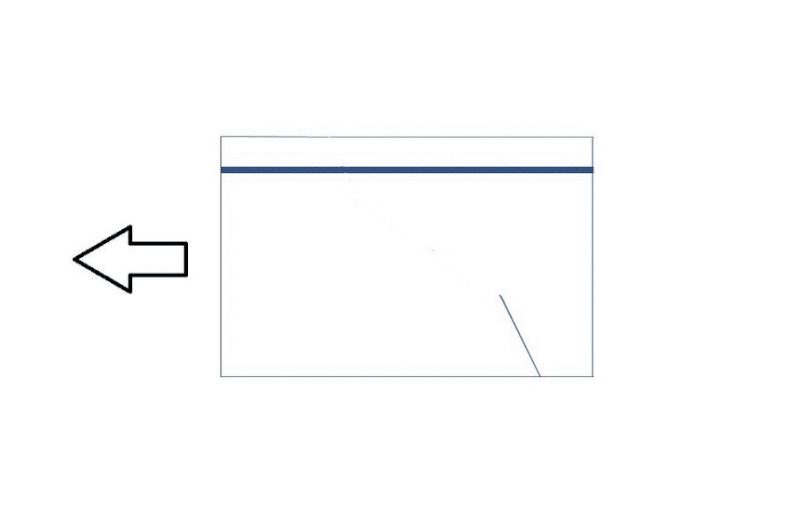
The same strong-weak-strong layer combination creates steep, then shallowing, then steepening fault segments in the models. Visibly different fault dips are quite apparent on the left sides of the model sections in the first image; the detail image below labels different strength zones.
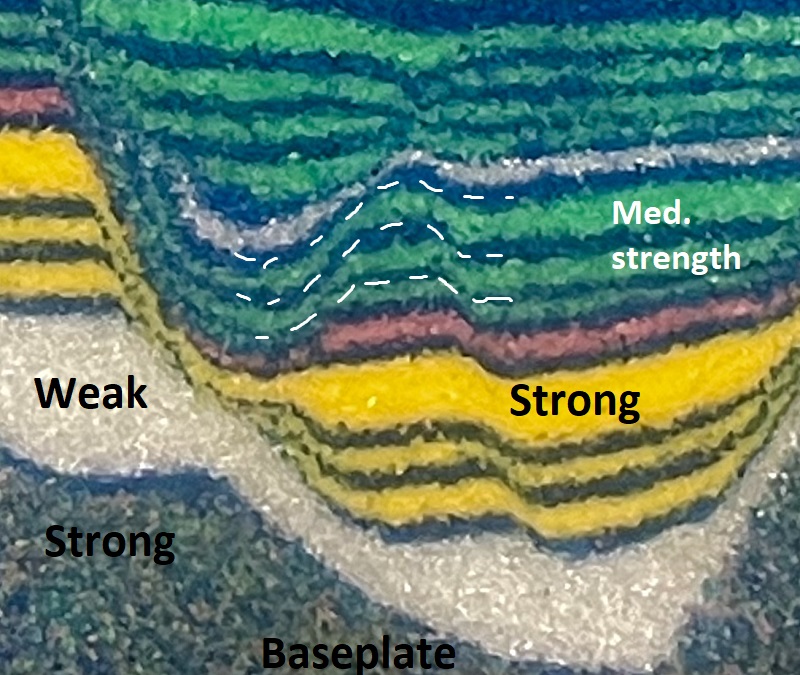
Frequently, extensional anticlines are quite fractured and faulted, particularly along their crests. The models shown above retained generally continuous beds through the entire anticline due to the moderate strength of the green/blue and pink/blue layers. The sand in these layers is slightly weaker (less frictional) than the underlying yellow sand layers, allowing deformation to occur without creating discrete fault surfaces. The layers on the crest of the anticline are certainly stretched and thinned; they just didn’t accommodate the stretching and thinning through localized faulting. The left-dipping faults above the anticlinal crests (yellow arrows, below) are an expression of the stretching above the fold crests; this stretching occurred above a shallowly-dipping segment of the deeper fault.
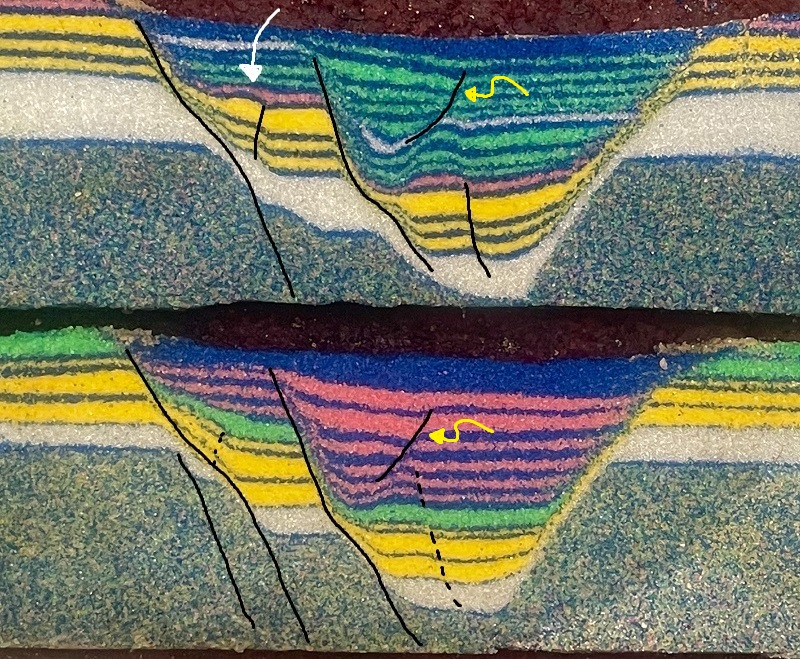
The white arrow in the image above (upper model) points out another purely extensional anticline that develops due to abrupt steepening of a normal fault at depth. Folds like this are quite interesting, and they do actually result from localized reverse faulting and “passive” compression in the hanging wall. I have modeled this process before, as well. Like the models shown here, mechanically different sands are necessary to create the passive compression.
The model shown below might have developed folding similar to previous examples with more extension. The dashed black line and question mark suggest a possible location for the next fault to develop. If faulting occurred in this position, a narrow, almost “pointed” anticlinal structure might have developed. The dashed line position is, however, very close to the main breakaway fault at the right side of the graben, so it might not be a reasonable place to expect the next shear plane to develop. Ultimately, this model is mechanically different from previous examples (stronger gray basement, thicker brittle yellow section), so different fault spacing and patterns are expected.
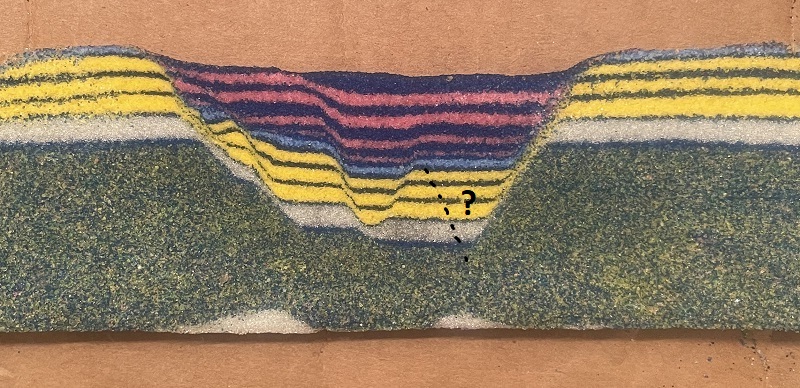
Like all sandbox models–and real geologic structures–materials present in the layer packs shown here dictate the geometries of the folds and faults that form. Perhaps the most interesting aspect of this entire post is the similarity between the first two models shown. They are structurally quite similar, but they weren’t made it the same model run…
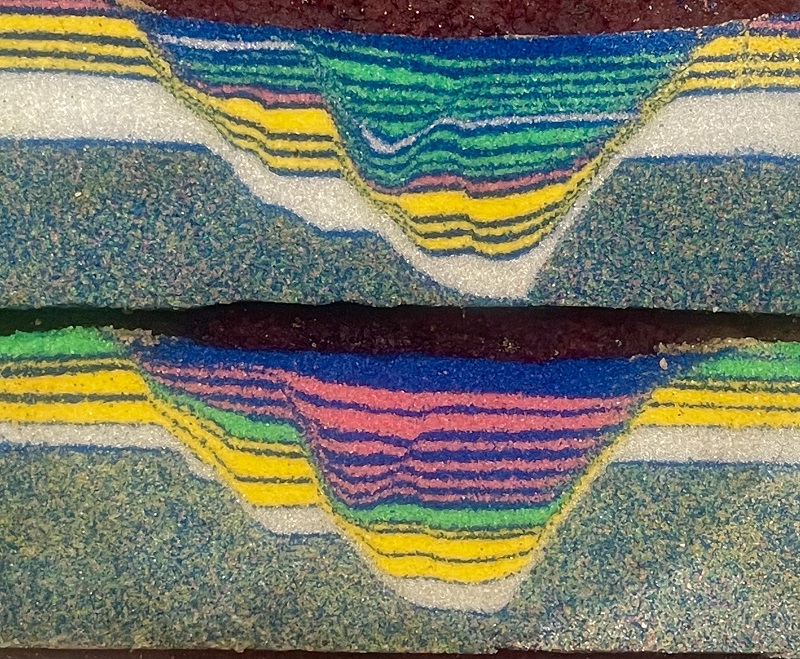
The model with green-and-blue basin fill was made about 1 week after the model with pink-and-blue basin fill. The models used the same combination of essentially mechanically identical materials and were extended the same amount, so the final model geometries were generally the same, despite being produced in two different modeling sessions. This reproducibility is a nice expression of the fundamental frictional relationships that govern Mohr-Coulomb failure at all scales.


